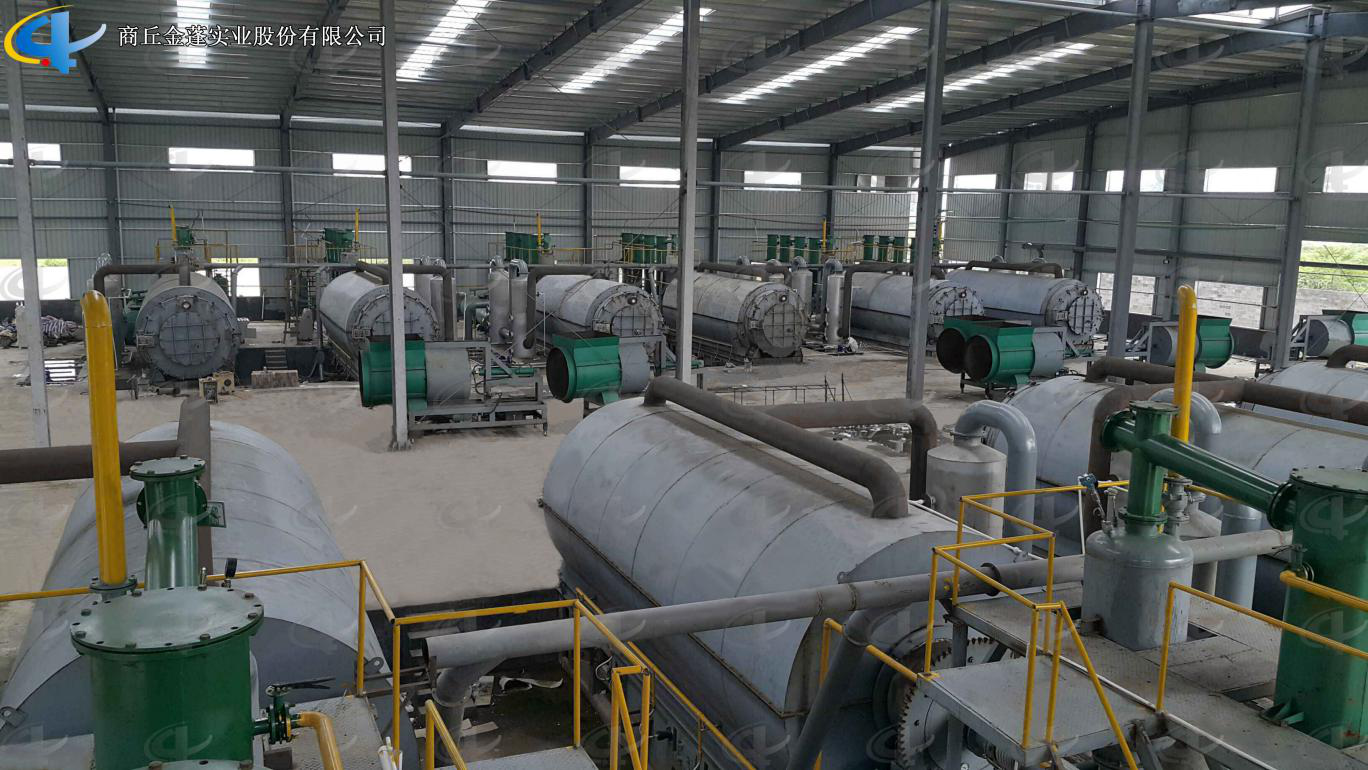The new review found that large-scale biofuels, often used as clean or sustainable renewable energy sources, actually produce more pollution than we think. Dr. Mary Buss said that biomass has become a new coal. The reason is that the EPA has reduced the detection of biomass combustion.
Waste Tyre Pyrolysis Plant
Pyrolysis Plant is used for recycling waste tire, waste plastic, waste rubber to fuel oil. According to the actual situation in every country and district, we developed different models of Batch Pyrolysis Plants for waste tires, rubber and plastic with daily capacity 5 -10 tons.
Flowchat of Batch Waste Tyre Pyrolysis Plant
Advantages of Batch Waste Tyre Pyrolysis Plant
1. Full open door design: Speedy loading in and steel pulling out; Easily cooling down after one batch finished, saving time; No leaking with special high temperature flexible graphite packing.
2. Unique Craft Condensers: High condensing efficiency with more oil output. Good quality oil, longer lifetime, and easy to clean.
3. National Patent Unique Smoke Scrubbers: More efficient removal of the acid gas and dust of the smoke by neutralization, purification and absorption, environmental friendly without pollution.
4. National Patent Carbon Black Discharging System: Speedy fully enclosed Auto-discharging under high temperature, avoiding carbon black pollution, saving time.
5. Automatic Submerged welding technology, ultrasonic nondestructive testing, both manual and the automatic safety devices.
6. Sync Gas Recycling System: Fully burned after recycling and utilization, saving fuel and preventing pollution.
7. Direct Heating System: Enlarging heating square to lengthen the lifespan of the reactor and easy to control the temperature.
8. National Patent, unique heat insulation shell; high efficiency temperature keeping, excellent energy-saving effect.
Technical Parameter of Batch Waste Tyre Pyrolysis Plant
NO.
ITEM
PROJECT
1
Equipment Model
XY-7
XY-8
2
Door Model
Full Open Door
Full Open Door
3
Suitable Raw Materials
Rubber/Plastic Products
Rubber/Plastic Products
4
Structure
Horizontal Type Revolves
Horizontal Type Revolves
5
Reactor Size
Φ2200*6000mm Φ2600*6600mm
Φ2200*6000mm Φ2600*6600mm
6
Capacity for One Batch
5-6Mt; 8-10Mt
5-6Mt; 8-10Mt
7
Oil Yield of Tires
40%-45%
40%-45%
8
Work Pressure
Normal Pressure
Normal Pressure
9
Reactor Rotation Speed
0.4R/M
0.4R/M
10
Fuels Choice
Coal, Wood
Coal, Wood, Gas, Oil
11
Power
18KW/H
18-25KW/H
12
Cooling Method
Water Cycling
Water Cycling
13
Type of Drive
External Annular Gear
External Annular Gear
14
Heating Method
Direct
Direct
15
Type of Installation
With Foundation
With Foundation/Integrated Base
16
Noise dB(A)
≦85
≦85
17
Operation Mode
Intermittent Operation
Intermittent Operation
18
Total Weight(MT)
25-40
25-40
19
Installation Space Required
30m*10m
30m*10m
20
Manpower
3~4/batch
3~4/batch
21
Shipment
Ф2200×6000=1*40HC+1*40FR
Ф2600×6600=2*40HC+1*40FR
Ф2200×6000=1*40HC+1*40FR
Ф2600×6600=2*40HC+1*40FR
Waste Tyre Pyrolysis Plant,Pyrolysis Plant ,Tyre Pyrolysis,Tyre Recycling Shangqiu Jinpeng Industrial Co., Ltd. , https://www.recyclings.nl
Booth research analyzed 88 biomass power plants and found that half of them used various loopholes to prevent them from reporting pollution, and many plants produced more than twice as many fossil fuel power plants when generating equivalent energy output. Contaminants. But they are not held accountable. Biomass power plants give special treatment in the Clean Air Act. The biological pollutants released by the factory are almost equivalent to those emitted by fossil fuels.
Each biomass power plant producing more than 8 megawatts of electricity will produce 100,000 tons of carbon dioxide pollution. The loopholes in the Environmental Protection Agency have caused them to burn construction waste such as wood waste, which is quite polluting. Biomass advocates say that because they burn wood and wood absorbs carbon dioxide, it evolves into a renewable resource. They are a "green" alternative. However, studies have pointed out that the carbon dioxide released by biomass combustion is much faster than naturally occurring.
“The EPD needs to adhere to a people-centered approach instead of protecting the bio-energy industry. The EPA should ensure that it does not create loopholes that result in unregulated burning, including those that flaunt biomass energy and meet the standards for waste incineration protection promulgated by the National Assembly.†Dr. Booth said. 
